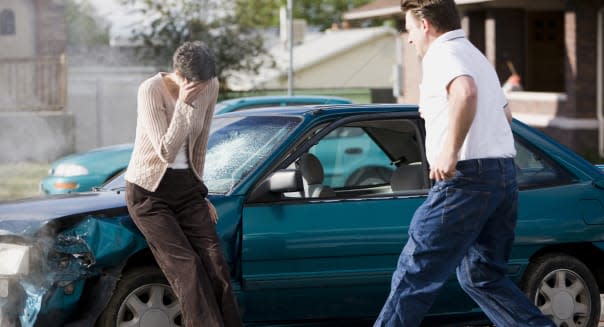Disability Insurance: The Coverage You Lack, but Really Need

Are you one of the 100 million people in the United States who are putting their retirement and financial lives in jeopardy?
Imagine driving home this evening and then suddenly waking up in an unfamiliar bed surrounded by unfamiliar people. You notice your loved ones and the look of concern on their faces. You are told that you were in an auto accident. You struggle to remember what happened, but fortunately there were several witnesses. The accident, to your relief, was not your fault. You think you've dodged a bullet because you know your auto policy insurance coverage was minimal.
In the days that follow, you learn that it may take months -– if not years –- to get rehabilitated. You worry how you will pay your bills if you cannot work. Luckily, your brother-in-law knows a great personal injury attorney who has agreed to help you. Should you expect a settlement of several hundred thousand dollars? Your attorney says to take it one day at a time, but that it is possible based on your injuries and the amount of time you will be unable to work. Although you would much rather be healthy enough to work, you can rest a little easier knowing you have an open and shut case.
And then you get a call that changes your life forever. Your attorney says the person who hit you has no insurance and no personal assets. "But I can still sue him, right?" you ask. "I can still get the money I need to pay my bills," you continue. The answer is no. If there was no insurance and there are no assets, you can sue -- but there is nothing for you to get.
Your health insurance policy will pay for your medical treatment, but once you are released from care, there are no assets to help you pay your mortgage or living expenses. You are on your own. After just a few months, what took you years to save has been depleted. You now are unable to work and have no assets left. The auto accident may have been unavoidable, but your situation sure was.
The Answer Is Disability Insurance
Disability insurance provides monthly income to those who become disabled as a result of injury or sickness. Unless you are nearing retirement, your ability to earn an income is your largest asset. And although disability is quite common -– studies have suggested a 35-year-old has an almost one in four change of becoming disabled during their working career -- approximately 69 percent of workers are without private disability income insurance. The reasons for this lack of coverage are many, but the high cost of disability insurance policies is one of them.
If you work for a large company, ask the human resources department if a group plan is provided and if you can increase your coverage. If you don't have access to employer-provided disability insurance, go for private coverage. If that doesn't work out add "uninsured/underinsured" coverage to your automobile insurance policy.
A rider you can request from your auto insurance company can protect you from the (are you ready for this?) 16 percent of U.S. motorists who have no auto insurance. Mississippi, Alabama and California have the highest percentage of uninsured drivers (all 25 percent or higher); Maine, Vermont and Massachusetts have the lowest percentage (all 6 percent or less).
Here's how it works. Even if someone hits you and you are not at fault, if they don't have insurance or enough assets to pay your lawsuit, your insurance company will pay the claim. It's basically an insurance policy protecting you from all these drivers who can't afford to pay you if they injure you.
For those without this coverage, Los Angeles personal injury attorney Jeff Wolf has to have a tough conversation. "It is very difficult to tell a client that her options are limited even when the driver who hit her and caused her serious physical injuries is clearly at fault. Yet, this is the conversation I am forced to have when the at-fault driver has no insurance or has insurance with a low policy limit. But, if a client has a large uninsured or underinsured motorist policy, then this practical hurdle never arises."
For $500,000 of uninsured/underinsured coverage, it will cost you approximately $200 to $300 extra a year, according to property and casualty insurance broker Mark Ray. This is cheap retirement protection, considering 14 percent of car accidents are caused by uninsured motorists.
Robert Pagliarini is a national expert on sudden wealth. Hiswealth management firmhas developed a unique process for handling the financial -- and often psychological -- issues of sudden wealth from inheritance, lottery, divorce, stock options, lawsuits, and sports/entertainment contracts. Connect with Robert on Twitter @rpagliariniorGoogle Plus.

